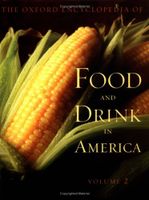Label
All
0
Clear all filters
🔥 Celebrate new books on our BBQ & Grilling shelf with 25% off ckbk membership 🔥
School Food: Federal Subsidy
Appears in
Published 2004
In 1933 Congress set aside 30 percent of import tax revenue to increase domestic consumption and remove farm surplus from the market. The USDA was allowed to operate food assistance programs and purchase farm surplus for school lunch programs in 1935. Thousands of Works Progress Administration (WPA) workers (72,000 in 1942, nearly all women) were hired to oversee health and safety policies, coordinate food supply with community and school gardens, form canning cooperatives in rural areas, and work in food preparation and service. Part-time staff (16,000 in 1941) provided by the National Youth Assistance Program (NYA) served food and made tables, chairs, and equipment. The School Milk Program, or “penny-milk program,” offered milk at a reduced price of one cent per half-pint. In 1941 the National Academy of Sciences–National Research Council set the first recommended daily allowances (RDAs) for a variety of nutrients. These guidelines were later used to set nutritional mandates for school meals. Lunch programs in this initial period peaked in 1943, serving 5,277,436 a day and using 56 million pounds of donated food a month.
Become a Premium Member to access this page
Unlimited, ad-free access to hundreds of the world’s best cookbooks
Over 150,000 recipes with thousands more added every month
Recommended by leading chefs and food writers
Powerful search filters to match your tastes
Create collections and add reviews or private notes to any recipe
Swipe to browse each cookbook from cover-to-cover
Manage your subscription via the My Membership page
Best value
Part of
Advertisement
Related Recipes
-
-
-
-
Related Reference
-
-
-
-
Advertisement
The licensor does not allow printing of this title



